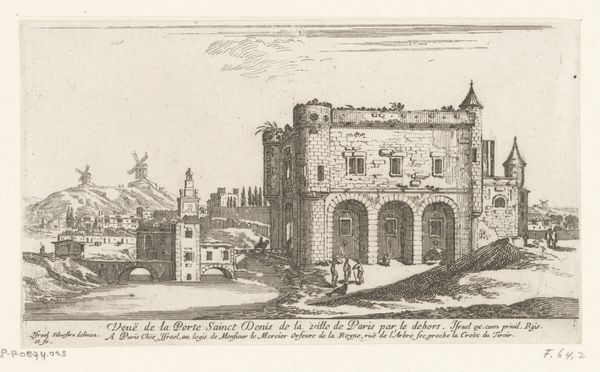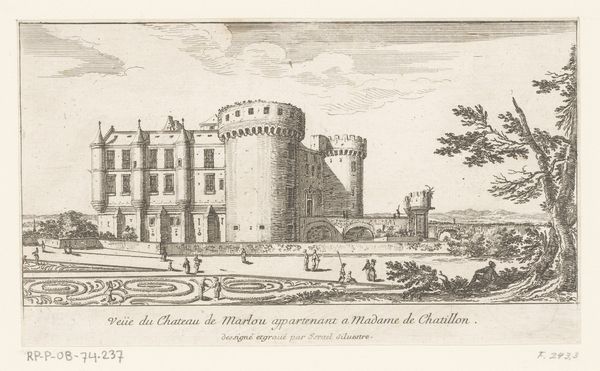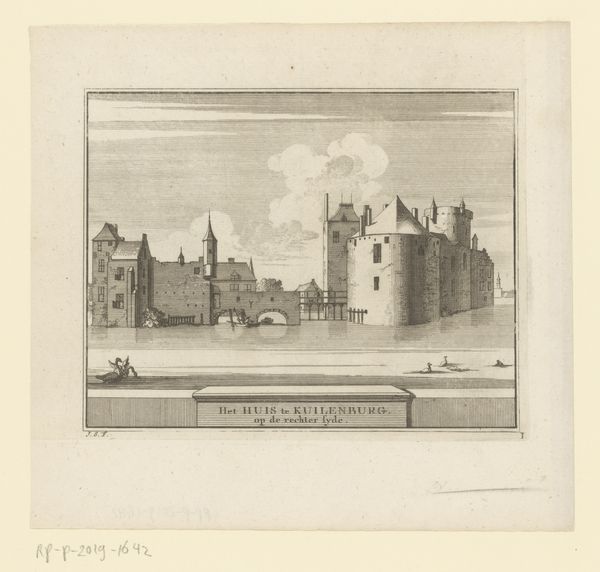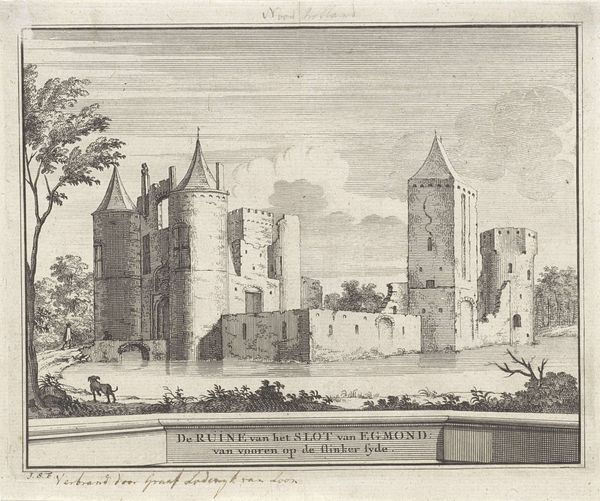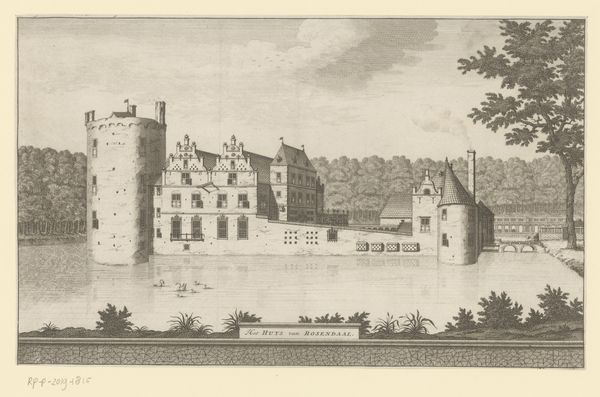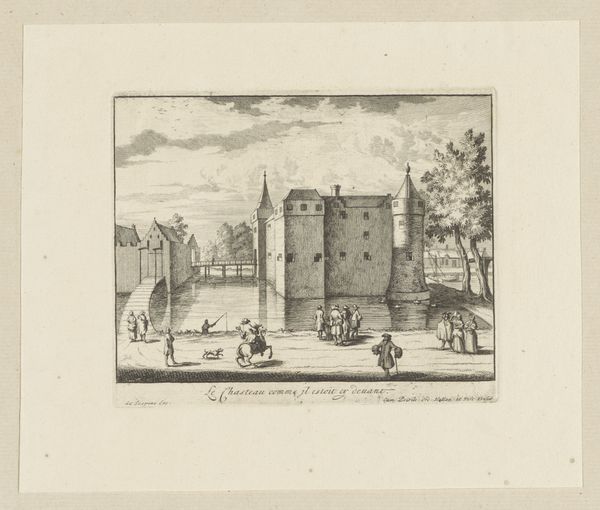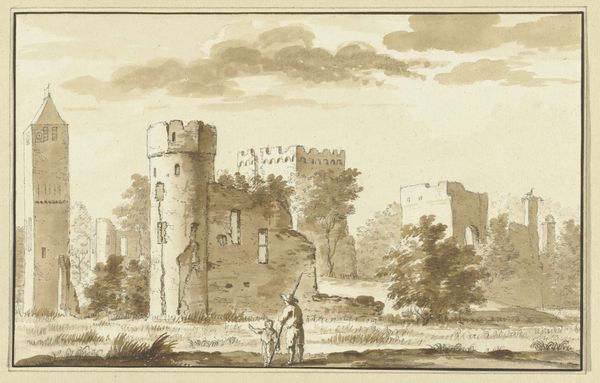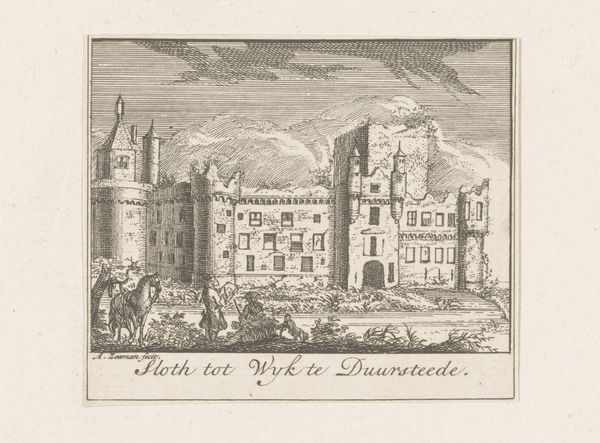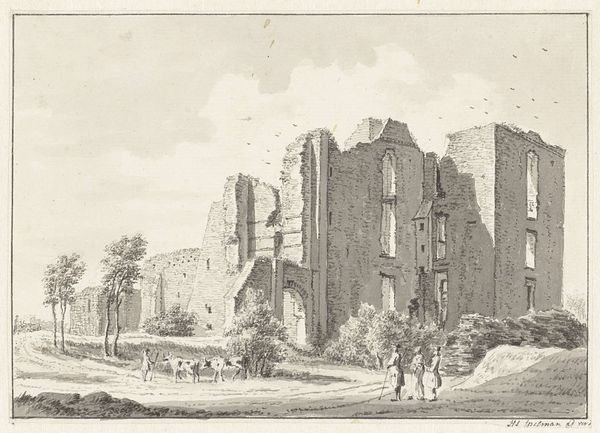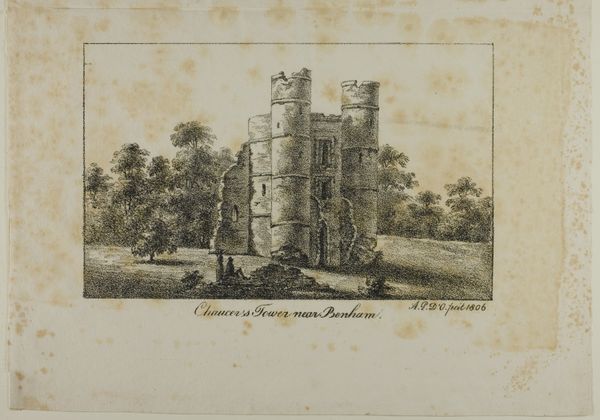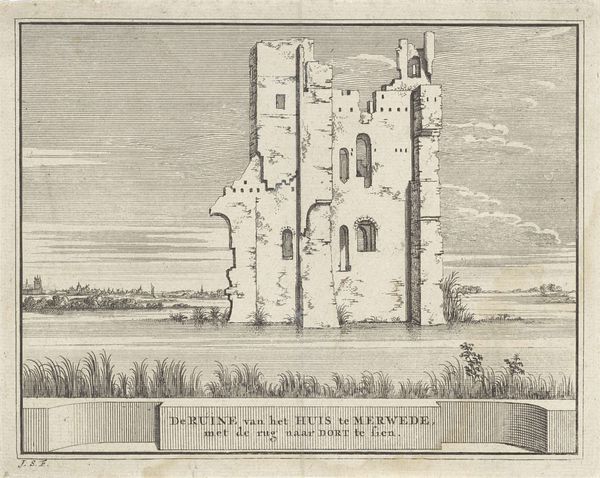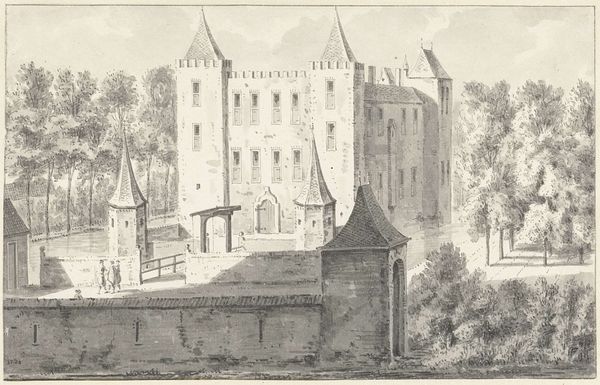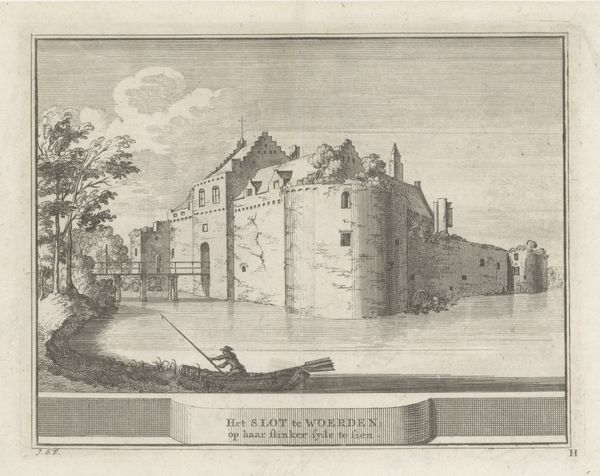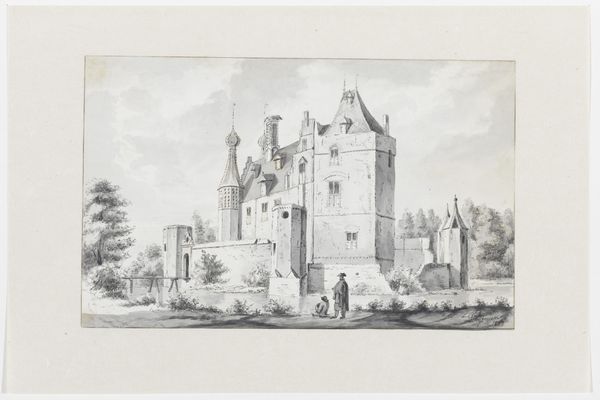
print, etching, engraving, architecture
#
dutch-golden-age
# print
#
etching
#
landscape
#
engraving
#
architecture
Dimensions: height 138 mm, width 175 mm
Copyright: Rijks Museum: Open Domain
Editor: Here we have "Gezicht op Huis Kronenburg te Loenen aan de Vecht," dating roughly from 1711 to 1774, attributed to Jacobus Schijnvoet. It's a print combining etching and engraving, depicting a house in a landscape. The scene feels quite still, almost austere in its presentation. What aspects of its composition particularly stand out to you? Curator: Indeed, the composition presents several interesting formal elements. Consider the line work; note the precision in the architectural details contrasted with the softer, more atmospheric rendering of the trees and sky. It generates a clear distinction between man-made and natural elements. Also, consider the texture achieved through the varying densities of hatching and cross-hatching. What do you make of the limited tonal range? Editor: It gives it a very graphic quality, almost like a technical drawing, even though it's presenting a landscape. The balance is quite interesting, too, with the large building offset to one side. Curator: Precisely. That asymmetry contributes to the image’s dynamic tension. Observe the positioning of the structure within the frame; it is neither centered nor fully to one side, but rather strategically placed to guide the viewer’s eye through the image. Note how the bridge leads into the darker portion of the treeline, yet ends directly at the house. How does the use of light affect the overall impact? Editor: The contrast seems to highlight the rough texture of the building, adding to the feeling of age and solidity. I hadn't considered how much the texture plays into the piece’s message. Curator: Yes. Furthermore, analyze how the formal properties – the lines, shapes, textures, and contrasts – work together to create the illusion of depth and three-dimensionality within a two-dimensional plane. It reveals the artistry within what might be dismissed as a purely representational work. Editor: I see your point; focusing on these technical aspects has definitely enhanced my appreciation for this ostensibly simple landscape. Curator: By attending to these formal elements, we can better understand the artist's choices and their effects on our perception of the artwork.
Comments
No comments
Be the first to comment and join the conversation on the ultimate creative platform.
